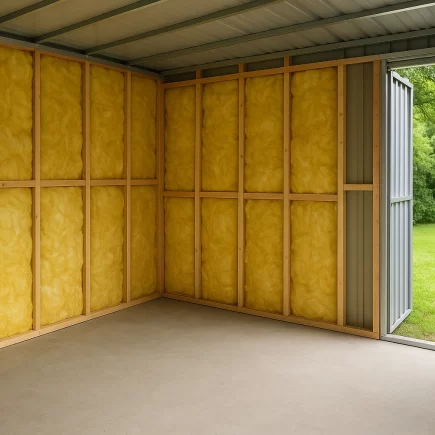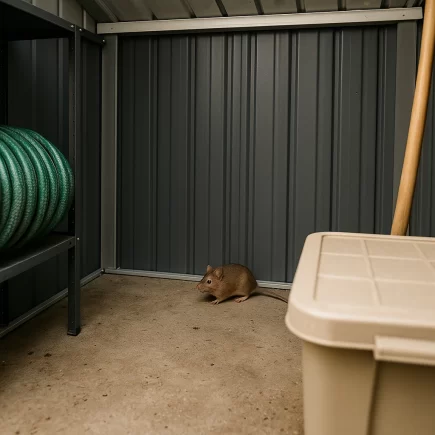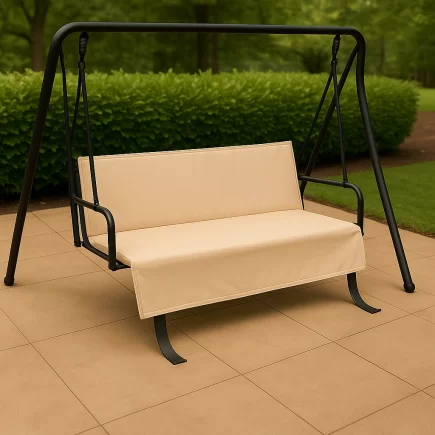Outdoor rugs bring warmth, style, and comfort to patios, balconies, and garden spaces. However, just like any other home accessory, they face their fair share of challenges. Exposure to dirt, moisture, mildew, and high foot traffic can cause outdoor rugs to lose their charm. Whether you have a beautiful rug adorning your porch or a runner under your outdoor furniture, cleaning and maintaining it regularly is essential for preserving its appeal and longevity.

In this comprehensive guide, we’ll walk you through everything you need to know about cleaning and maintaining your outdoor rugs, covering all the steps, tips, and eco-friendly solutions you need to keep your rug looking brand new for years.
Tools and Materials Required for Cleaning Outdoor Rugs
Before you start cleaning, gather all the necessary tools and materials. This will save you time and ensure you do the job properly.

| Tool/Material | Purpose |
| Broom or Vacuum | To remove loose dirt, dust, and debris from the rug’s surface. |
| Garden Hose or Bucket | For rinsing the rug thoroughly to remove dirt and cleaning agents. |
| Mild Dish Soap/All-Purpose Cleaner | Used for general grime and stain removal. |
| Baking Soda and Vinegar | Natural cleaning agents for deep stains, odors, and mildew. |
| Soft-Bristle Brush | To scrub gently without damaging the fibers of the rug. |
| Enzymatic Stain Remover (Optional) | For tough stains, especially pet accidents or food spills. |
With these basic tools and materials, you’ll be ready to tackle even the dirtiest outdoor rug.
Step-by-Step Process for Cleaning Outdoor Rugs
Cleaning your outdoor rug is not a difficult task, but it does require a little attention to detail to ensure it remains fresh and vibrant. Follow these detailed steps to achieve a deep clean without damaging the fibers.
1. Shaking or Sweeping: The First Step to a Cleaner Rug
To start, remove as much loose dirt and debris as possible. This is the most basic yet important step to prepare your rug for cleaning.
- Shaking the Rug: If your rug is small enough to move, take it outside and shake it vigorously. This will dislodge loose dirt, leaves, or other debris that might be stuck in the fibers.

- Sweeping for Larger Rugs: For larger rugs that can’t be easily shaken, use a broom to sweep off the dirt. Sweep in different directions to ensure the debris is thoroughly removed. Doing this outdoors helps avoid dragging dirt into your home.
Shaking or sweeping prevents dirt from getting trapped deeper into the rug fibers during the washing process, making it easier to clean.
2. Vacuuming Both Sides: Thorough Dirt Removal
Vacuuming is a great way to get rid of fine dirt and dust that shaking or sweeping might have missed.
- Vacuuming Both Sides: Once the loose debris has been removed, take the time to vacuum both the front and back of the rug. This step is especially effective in removing fine dust that may have settled into the fibers.
- Using the Right Vacuum: For optimal results, use a vacuum cleaner with strong suction. If you have a larger rug, a vacuum with a hose attachment or a wet/dry vacuum is ideal for pulling up dirt that’s deeper within the fibers.
This step ensures a more thorough clean by removing hidden dust and dirt that could otherwise affect the quality of the wash.
3. Rinsing with Water: Prepping the Rug for a Deeper Clean
After you’ve removed the dry dirt, it’s time to rinse the rug with water. This step helps to loosen up any grime that’s settled on the surface and prepares it for a more effective clean.
- Using a Garden Hose: A garden hose is ideal for thoroughly rinsing your rug. Simply spray the entire rug with water, focusing on both sides, to ensure you loosen dirt and dust.

- Using a Bucket: If you don’t have access to a hose, a bucket filled with water can be used as well. Pour the water over the rug and use a sponge or cloth to help spread it evenly.
Rinsing helps remove the surface dirt and prevents any cleaning solutions from sitting on the rug’s surface, allowing the cleaning agents to work more effectively during the next steps.
4. Applying Mild Soap Solutions: The First Step Toward Deep Cleaning
After rinsing, it’s time to tackle dirt, stains, and odors. A mild soap solution works wonders without damaging the fibers.
- Mixing the Solution: In a bucket, mix warm water with a few drops of mild dish soap or an all-purpose cleaner. You don’t need too much soap, just enough to create a light sudsy solution that will gently clean the rug.
- Pouring the Solution: Pour the soapy water evenly over the rug, starting from one end and working your way to the other. You may need to apply the solution in sections, especially for larger rugs, to ensure each part gets cleaned effectively.
Mild soap solutions are gentle on outdoor rug fibers while still being powerful enough to break down dirt, stains, and odors. Using too much soap can leave residue behind, so a light application is enough.
5. Scrubbing with a Soft Brush: Lifting Grime Without Damaging Fibers
Now that the soap solution is applied, it’s time to scrub the rug. A soft-bristle brush is key to lifting grime without harming the rug.
- Using a Soft-Bristle Brush: Choose a brush with soft bristles to gently scrub the rug. Use circular motions to agitate the dirt and grime, focusing on stained areas and high-traffic spots. This will help dislodge deep-set dirt without damaging the fibers.
- Paying Extra Attention to Stains: If you notice any stubborn stains, apply a little extra pressure and scrub those spots more thoroughly. Use a spot treatment if necessary, but be gentle to avoid fraying the fibers.
A soft-bristle brush ensures a deeper clean without causing damage to the rug’s fibers, especially for delicate rugs that could easily become frayed.
6. Rinsing Thoroughly: Removing Soap and Residue
The final step in the cleaning process is rinsing the rug thoroughly to remove any soap residue, which can attract dirt if left behind.
Use your garden hose again to thoroughly rinse the rug. Be sure to remove all soap and cleaning residue. If you’re using a bucket of water, pour clean water over the rug several times, ensuring that the soapy water is completely rinsed out.
How to Handle Stubborn Stains on Outdoor Rugs
Stains happen, but they don’t have to ruin the beauty of your rug. Follow these steps to handle the most common tough stains on outdoor rugs:
Tackling Wine, Mud, or BBQ Spills

When spills happen, time is of the essence. Immediately blot the stain with a clean cloth to soak up as much of the liquid as possible. Avoid rubbing the stain, as this can push it deeper into the fibers. Use a mixture of warm water and mild dish soap to treat the stain. Apply the solution to the affected area and scrub gently with a soft-bristle brush.
For tougher stains like BBQ grease or red wine, sprinkle some baking soda over the affected area. Let it sit for about 15-20 minutes to absorb the stain and odor, then vacuum or brush it away.
Using Baking Soda and Vinegar for Deep Stains and Odors
Baking soda and vinegar are powerful natural cleaners. For persistent odors or deep stains, sprinkle a generous amount of baking soda over the area, followed by a light spray of white vinegar. Allow the mixture to bubble for a few minutes and then scrub with a brush. Afterward, rinse the rug thoroughly with water to remove the residue.
Mildew and Mold Removal: Keep Your Rug Fresh and Clean
Outdoor rugs are often exposed to moisture, which can lead to the growth of mildew or mold. Fortunately, there are simple and effective ways to remove these unwanted growths.
Identifying Mildew and Mold

Mildew and mold often appear as black or green spots on the surface of the rug, and they can leave a musty smell behind. If you notice any of these signs, it’s time to act quickly to prevent further damage.
Using Vinegar or Baking Soda
Both vinegar and baking soda are excellent natural solutions for removing mildew and mold from outdoor rugs. To use vinegar, mix one part vinegar with four parts water in a spray bottle. Spray the affected areas and let it sit for 20 minutes. Afterward, scrub gently with a soft brush and rinse thoroughly.
For a baking soda treatment, sprinkle a generous amount over the affected area and let it sit for 30 minutes. Once the mildew or mold is gone, vacuum the area to remove the powder, then rinse the rug.
Effective Daily and Weekly Maintenance for Outdoor Rugs
Keeping your outdoor rug in top condition doesn’t require deep cleaning every week. With a few simple habits, you can ensure your rug stays fresh and clean:
Quick Shake-Outs and Sweeping
Shaking out your rug regularly will prevent dirt from accumulating. If you can’t shake it out, a quick sweep with a broom will help remove leaves, dust, and other debris that might collect on the surface.
Regular Vacuuming

Vacuuming your rug weekly will lift dust, dirt, and debris that may settle deep into the fibers. Use a vacuum with a beater bar on a low setting or one without rotating brushes to avoid damaging delicate fibers.
Material-Specific Rug Care: Synthetic vs. Natural Fibers
Outdoor rugs come in many materials, and knowing how to care for them properly is crucial to maintaining their longevity.
How to Clean Synthetic Rugs (Polypropylene, Polyester)

Synthetic rugs are made from durable materials like polypropylene and polyester. These fibers are moisture-resistant and can handle a bit more scrubbing without damage. Cleaning them is as simple as using mild dish soap and water, followed by a rinse.
Caring for Natural Fiber Rugs (Jute, Sisal)
Natural fiber rugs, such as jute or sisal, require gentler cleaning methods. These rugs can be damaged by excessive moisture, so avoid soaking them. Spot clean with a damp cloth and mild soap, and be sure to dry them quickly.
Maintenance Tips to Keep Your Outdoor Rug Looking Fresh Year-Round
Maintaining your rug throughout the year is important for its longevity.
Routine Cleaning Habits
Routine cleaning habits, such as shaking, vacuuming, and spot cleaning, will help prevent dirt from settling into your rug and keep it looking fresh.
Preventing Stains with Outdoor Mats and Doormats
Use doormats or outdoor mats to catch dirt before it reaches your rug. These simple additions can significantly reduce the frequency of deep cleaning.
Rotating the Rug
Rotate your rug every few months to ensure even wear. This helps prevent fading caused by direct sunlight and foot traffic.
FAQS
1.How can I remove pet hair from my outdoor rug?
To remove pet hair from your outdoor rug, use a vacuum with a strong suction or a rubber broom. Alternatively, you can use a lint roller to pick up any remaining hair, ensuring the rug stays clean and hair-free.
2.Can I machine wash my outdoor rug?
Most outdoor rugs are not machine washable due to their size and material. It’s best to clean them by hand using mild soap, water, and a soft brush for a more thorough and gentle clean without damaging the fibers.
3.My outdoor rug smells musty, what should I do?
If your outdoor rug has a musty smell, sprinkle baking soda over it and let it sit for 15-20 minutes before vacuuming. If the smell persists, try using a vinegar and water solution to neutralize the odor, followed by a good rinse and proper drying.





















